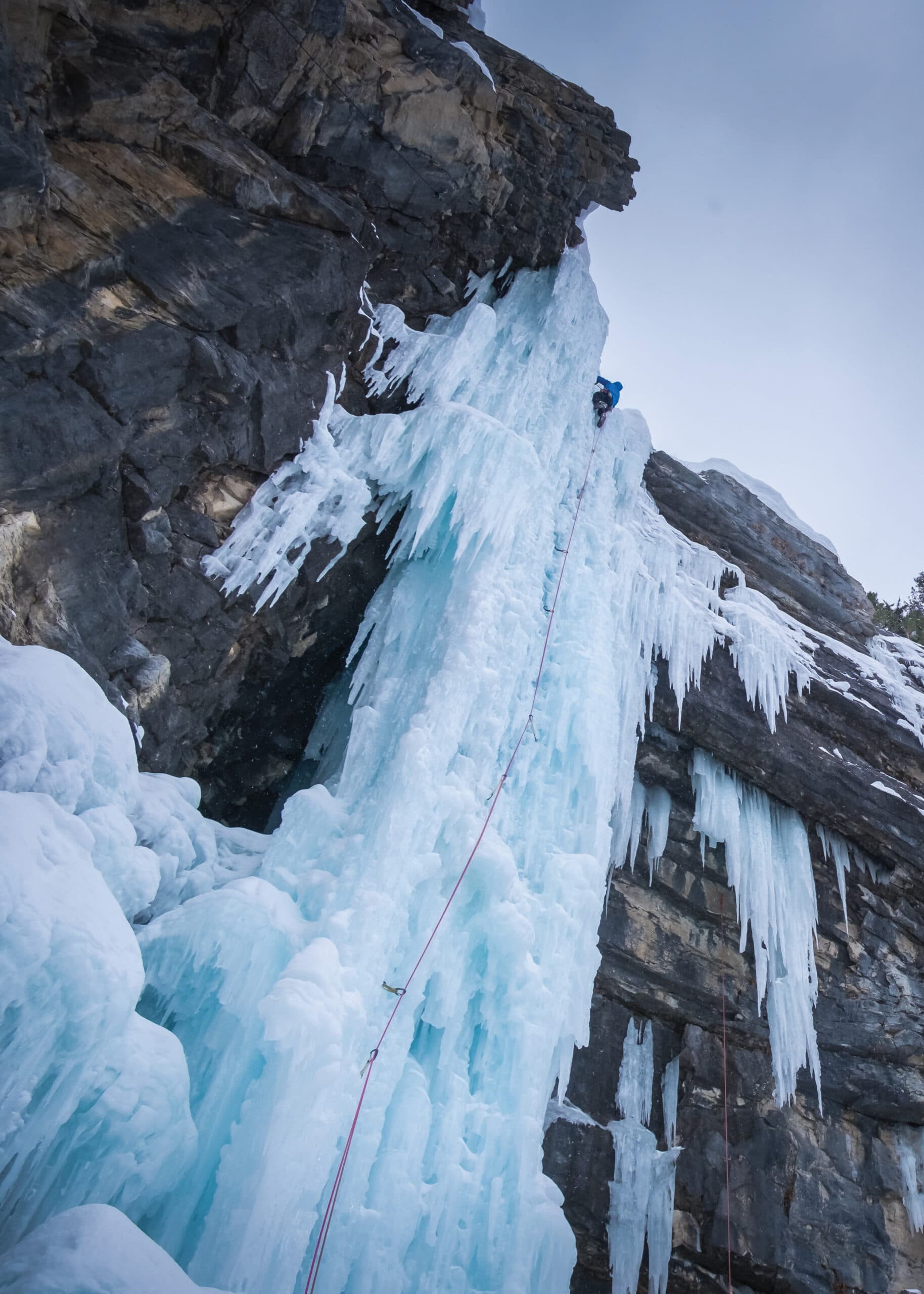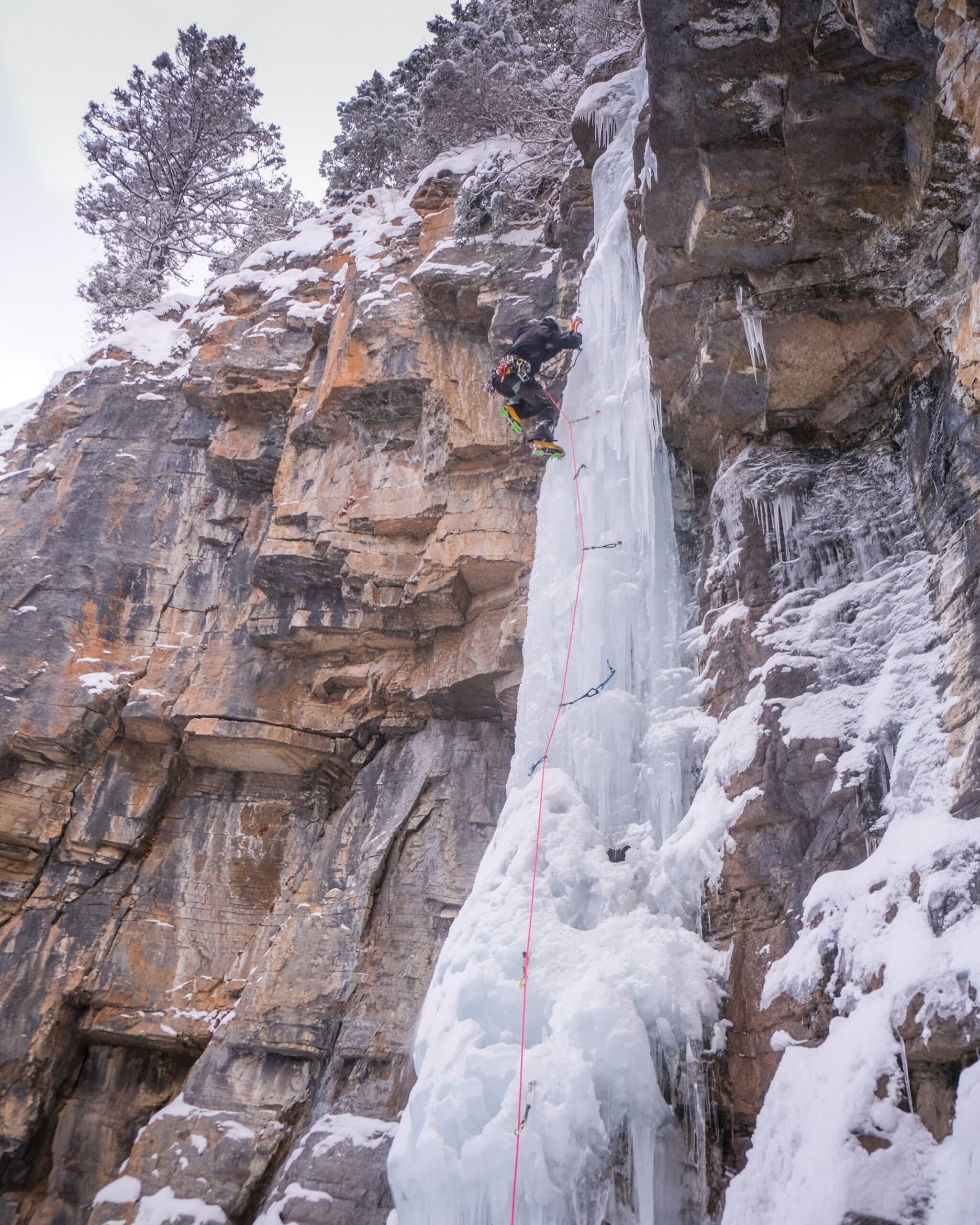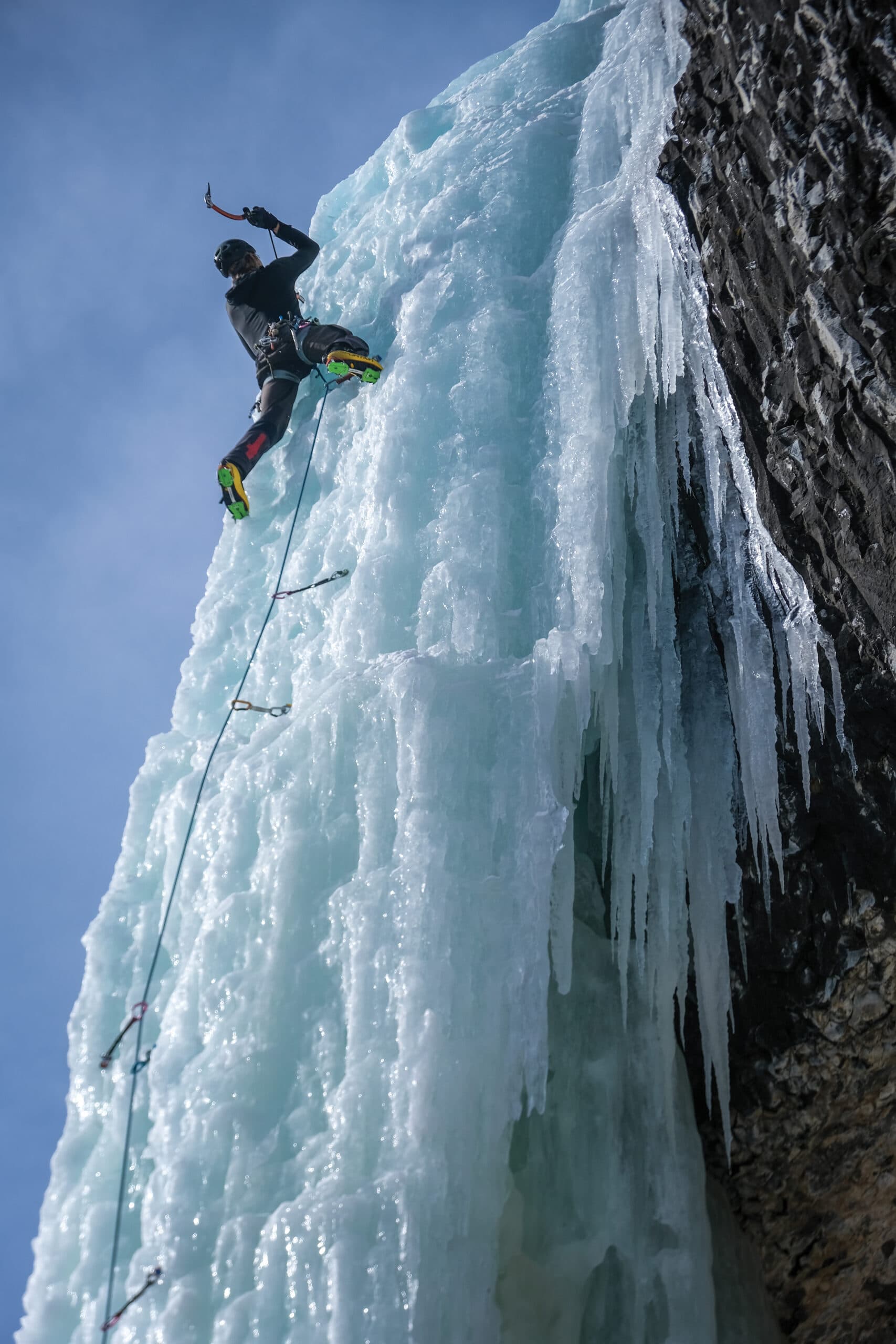Walking on Thick Ice

Teton Valley is world-renowned for its winter recreation. Skiing and snowboarding dominate the scene, with snowmobiling, snowshoeing, fishing, and hunting filling out the margins. But deep within the vast Teton Range, one overlooked group hides in the shadows … literally.
From November to April, the Teton climate is consistently cold enough to bond water with rock, freezing perennial waterfalls and seasonal seeps into magnificent ice climbs. Some, like Prospector Falls in Grand Teton National Park, can tower upwards of five hundred vertical feet.
Decades ago, ice climbing was ultra-niche, relegated to a fringe collection of self-proclaimed masochists with an abnormally high tolerance for risk and suffering. Information on climbs was sparse, weather forecasts were less reliable than today’s, and equipment was primitive. Fortunately, times have changed. In 2025, propelled by exponential advancements in gear, meteorology, and public information, ice climbing has entered the mainstream.
Sort of. According to the Outdoor Industry Association, approximately three million Americans participate in ice climbing each year, up from a mere 50,000 in the early 2000s.
As an avid ice climber for the past six years, I’ve seen the number of locals interested in the sport grow substantially every season. And while the concentration of Teton ice climbs pales in comparison to North American destinations like Cody, Wyoming; Bozeman, Montana; and Salt Lake City, Utah; there’s still ample frozen water to go around in the greater Teton region.




So, how does it work? Climbers use specialized ice tools and crampons to ascend frozen waterfalls, implementing ropes and ice screws to protect against a fall. An “ice tool” is an ice axe with a curved shaft for enhanced ergonomics, and a thin pick designed for puncturing, but not fracturing, hard ice. Crampons resemble a downward-pointed steel crown that fits to the bottom of a rigid-soled boot, with one or two points extending outward from the toe. With all appendages clad in sharp steel, climbers can swing, kick, step, and pull their way toward the sky. An “ice screw” is a hollow metal screw with an extendable handle that easily bores into ice by hand. Climbers periodically install ice screws and clip their rope to them with a carabiner to guard against falls. In solid ice, an ice screw can hold upwards of 4,000 pounds.
According to Garrick Hart’s Teton Ice guidebook, the first guidebook exclusive to ice climbing in the Teton Range, there are more than three hundred ice climbs in our home mountains. The majority of these climbs are relatively small—less than fifty feet—but a few prominent players stand out. Prospector Falls is the tallest reliable ice climb in Grand Teton National Park. In the summer, this perennial waterfall is visible on the southern wall of Death Canyon from the popular Phelps Lake Overlook. By winter it is a terraced, 500-foot wall of ice, up to twenty feet thick and a hundred feet wide. On the lauded 13,775-foot Grand Teton, a 1,000-foot, 60-to-70-degree ice vein connects the snowfields of Teepe Glacier to the impressive Ford Couloir. This miraculous hallway is a vital component of the Grand’s standard winter climbing and skiing route, providing reasonable passage over what would otherwise be very difficult and loose rock climbing.
On the western slope, Teton Canyon reigns supreme, boasting dozens of stellar ice climbs, including the venerable 140-foot-tall Eagle Scout Pillar, visible from the groomed Nordic cross-country ski track. Have you noticed it? If not, look for an incredible and prominent monolith of baby blue ice pouring over the first cliff band above the Treasure Mountain Boy Scout Camp. The magnitude of this natural wonder is impossible to comprehend from the road. Even if you’re not a climber, I suggest visiting the base.
With all the many winter activities at our fingertips in the Tetons, ice climbing may not soar to the top of the “must-do” list. So, why do we do it? As a serial ice climber, I can attest we are built differently. But contrary to popular opinion, neither adrenaline nor thrill-seeking plays a role in my draw to ice climbing. Instead, I am attracted to the physical challenge and building intimate personal connections with partners through trust, all while experiencing deep immersion into the natural world through a unique, ephemeral medium.
It is also a sport that is all about timing, and knowing exactly when to go, with safety at the forefront. While some ice climbs form in early winter and remain scalable through April, others can form and disappear within a week. Two winters ago, I climbed a brilliant 750-foot route on the north face of Sphinx Mountain near Ennis, Montana. According to local guidebook author Joe Josephson, that climb, named Styrofoam Boots, is only known to form about “every decade or so.” Nine out of ten winters the face is a mostly dry, unclimbable mess of rotten, weather-worn conglomerate rock. But in December 2023, the perfect recipe of early winter snowfall, warm days for melting, and cold nights for freezing created a mythical passage of climbable ice. In this way, the sport is like a treasure hunt. You never know exactly what you’ll get—and as the time-honored adage goes: There’s only one way to find out!
Ice climbing is highly specialized and dangerous. If you’re interested in trying the sport, it’s best to go with an experienced friend, or hire a professional guide. Exum Mountain Guides is the premier service in the Greater Yellowstone Ecosystem, with headquarters in Jackson, Wyoming. They have access to every nook and cranny of the Teton Range, and guides capable of facilitating a safe and magical ice climbing experience.
